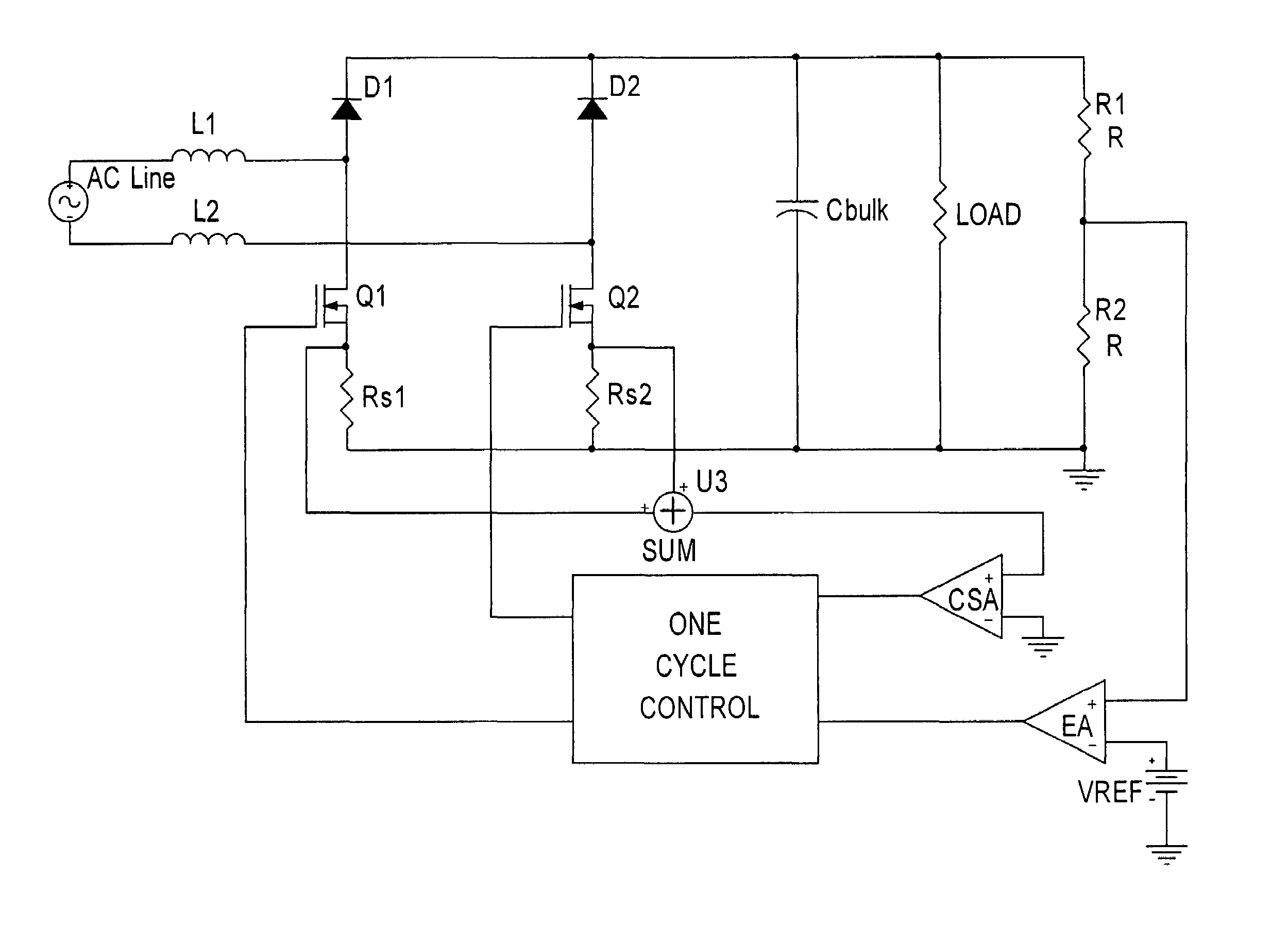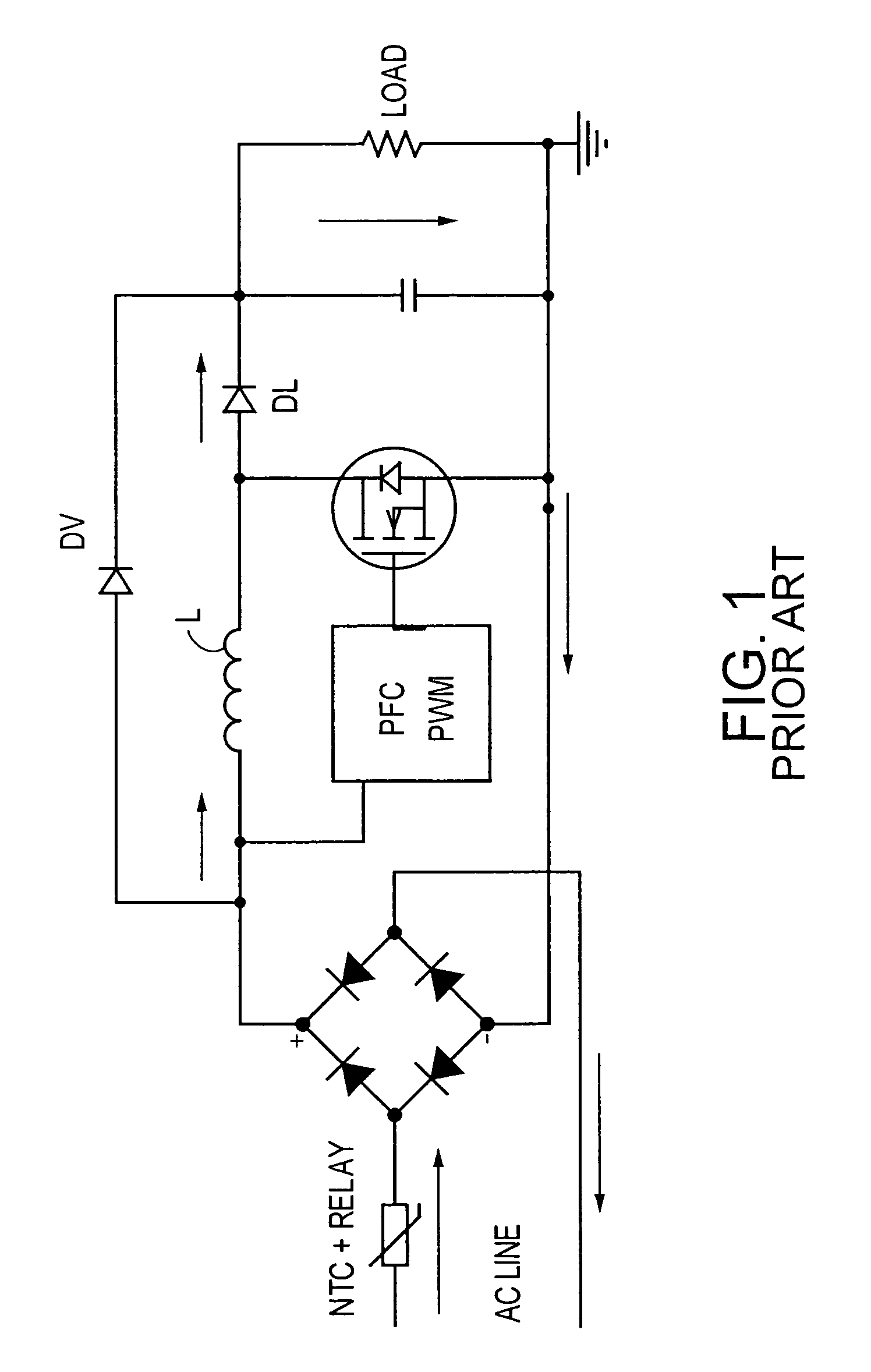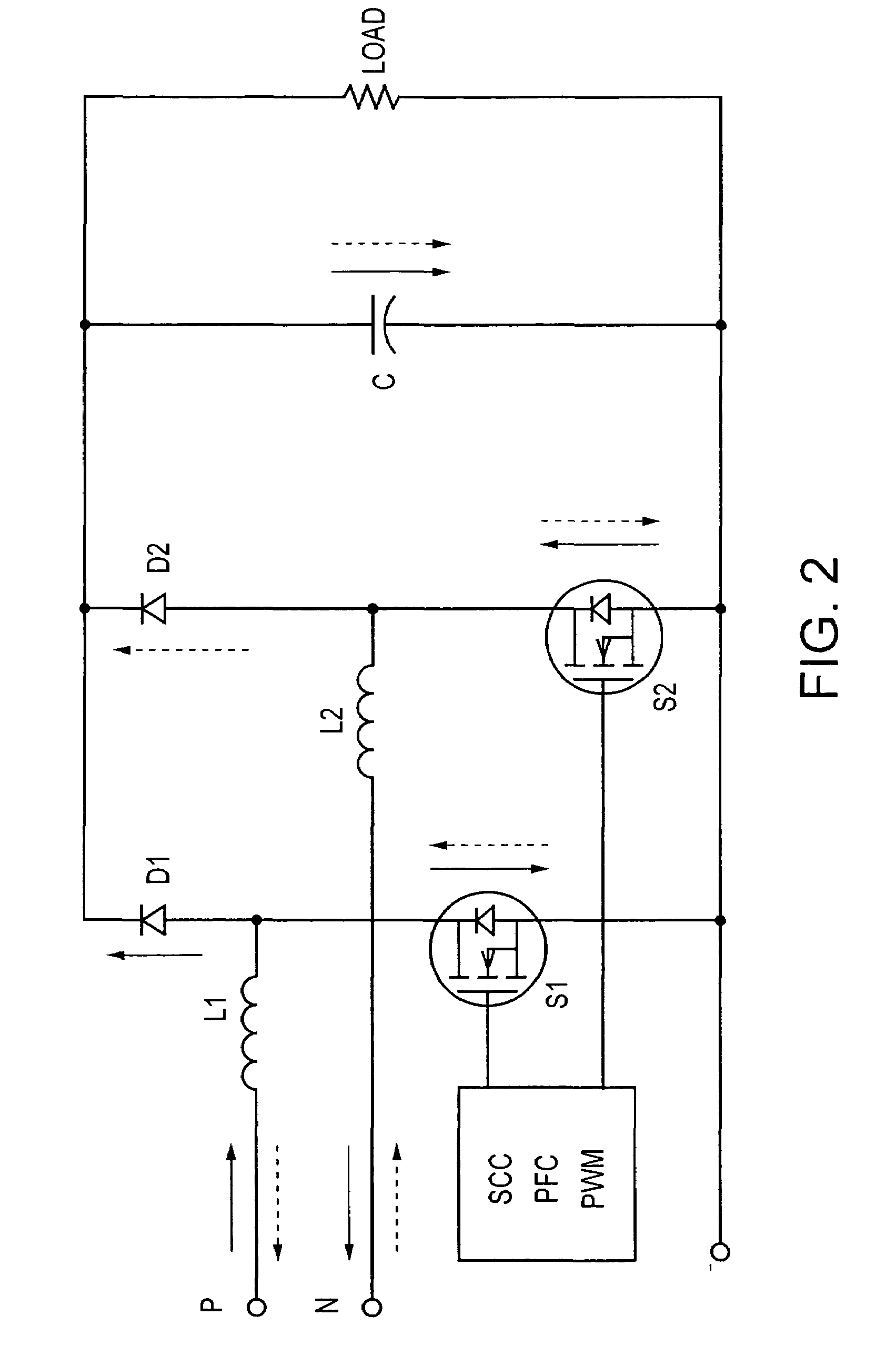Bridge-less boost (BLB) power factor correction topology controlled with one cycle control
a topology and power factor technology, applied in the direction of electric variable regulation, process and machine control, instruments, etc., can solve the problems of high conduction loss, undesirable topology, impracticality of implementation, etc., to eliminate the intrinsic loss of the input rectifier bridge, reduce the size of the system, and reduce the power dissipation
- Summary
- Abstract
- Description
- Claims
- Application Information
AI Technical Summary
Benefits of technology
Problems solved by technology
Method used
Image
Examples
experimental implementation
[0087]D. Experimental Implementation
[0088]Based on the analysis above, the bridgeless PFC circuit can both simplify the circuit topology and improve the efficiency. Moreover, the one cycle control is the most attractive control method for the bridgeless PFC circuit. One 500W, 100 kHz switching frequency, universal line input bridgeless PFC circuit was designed and implemented with one cycle control. 600V 22 A super junction MOSFET and 600V 4 A SiC diode were used in the prototype. In addition, a conventional PFC circuit using same devices was built to serve as the benchmark.
[0089]The input voltage and current waveforms are shown in FIG. 23. The input current perfectly follows the input voltage. Thus the power factor correction function is achieved by using the one cycle controller. The efficiency comparison between these two circuits at 90V input line voltage is shown in FIG. 24. For the whole power range, efficiency improvement is around 1%, which is quite coincident with the theor...
PUM
 Login to View More
Login to View More Abstract
Description
Claims
Application Information
 Login to View More
Login to View More - R&D
- Intellectual Property
- Life Sciences
- Materials
- Tech Scout
- Unparalleled Data Quality
- Higher Quality Content
- 60% Fewer Hallucinations
Browse by: Latest US Patents, China's latest patents, Technical Efficacy Thesaurus, Application Domain, Technology Topic, Popular Technical Reports.
© 2025 PatSnap. All rights reserved.Legal|Privacy policy|Modern Slavery Act Transparency Statement|Sitemap|About US| Contact US: help@patsnap.com



